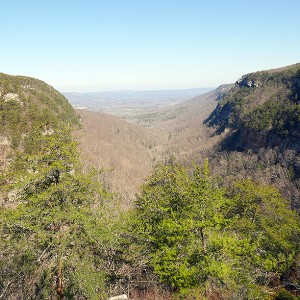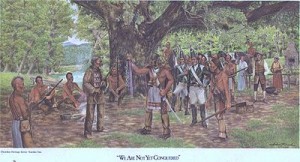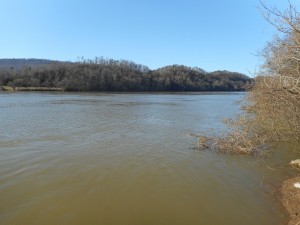 The nearby preserved Etowah Indian Mounds Historic Site serves as a physical illustration of a chapter within the Georgia Ridge and Valley Region’s cultural geography. An approximate 85.7 miles from the Cloudland Canyon State Park, the Etowah Mounds are emblematic of the kinds of manipulation communities were creating within their landscapes since 1000 AD and possibly prior.
The nearby preserved Etowah Indian Mounds Historic Site serves as a physical illustration of a chapter within the Georgia Ridge and Valley Region’s cultural geography. An approximate 85.7 miles from the Cloudland Canyon State Park, the Etowah Mounds are emblematic of the kinds of manipulation communities were creating within their landscapes since 1000 AD and possibly prior.
According to Georgia State Parks, the Etowah Mounds are the most intact Mississippian Culture site in the Southeast. The infrastructure developed at this site, which includes 6 earthen mounds, a plaza, village site, borrow pits and defensive ditch could easily have been replicated throughout the Ridge and Valley region. The preserved site also demonstrates the nature trails that tribes created in order to find creeks for fishing, and trees used for food and medicine. In addition, the extensive mounds demonstrate the culture’s rich sense of ritual. The tallest mound, 63-feet in height, was most likely used as a platform for the tribe’s priest-chief. According to Georgia State Parks’ database, other mounds were used to memorialize and bury nobility.

Besides the archaeological site of Etowah Mounds, Chickamauga area of the Ridge and Valley Region is also a place with rich cultural and communal heritage of the Native Peoples. The Chickamauga Cherokee called themselves Chicomogie. The Chickamauga Cherokees have the most unique names. The chief of Great Island Town (one of the five lower towns) is called Dragging Canoe. (The signatures of Dragging Canoe, Hanging Maw and Little Turkey can be found on the document “Meeting Arrangements for Another Peace Treaty”). In 1776-1777, Dragging Canoe and his followers who supported the British in the American Revolutionary War moved down the Tennessee river and established new settlement at the place the Great Indian Warpath crossed the Chickamauga Creek, near where Chattanooga, Tennessee is today.

The town was named after the stream. Toponym is part of human geography. In popular culture, Chickamauga in Cherokee word means “river of death”and have references to wars. Some scholars claim that dialects result in misinterpretation and that the name might mean “stagnant water” and not from early warfare but as location that Cherokee contracted smallpox. Other scholars thinks it means fishing place. In 2007, however, Native American scholars discovered that the Native American towns of Chickamauga was originally a Chickasaw town but the Cherokees who followed Dragging Canoe arrived in large number and the white settlers labeled all as Cherokees. Therefore the word Chickamauga should be translated from Chiasaw words which mean “place to site and look out” which makes sense because the Chickasaw town of Chickamauga was near the foot of Lookout Mountain.
Authored by Savannah Miller and Liu Yang
Works Cited:
Heape, T. E. (n.d.). Middle Tennessee’s Native American History:. Retrieved from http://www.nativehistoryassociation.org/dragging_canoe.php
Thornton, R. (2012, August 20). Early History of the Chickasaw People. Retrieved from http://peopleofonefire.com/early_history_of_the_chickasaw_people.htm